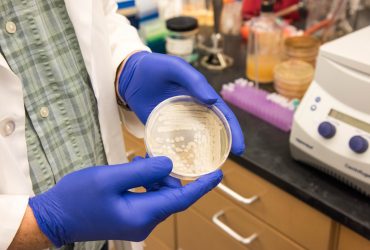July 6, 2016

Anthrax: villain or misunderstood?
Stewart holds a different colony of anthrax in his lab. Stewart’s work with anthrax and other similar organisms focuses on understanding the tough protein shell of the bacteria’s spores that enable the pathogen to survive in soil for extended periods of time, even hundreds of years. | photo by Phillip Sitter, Bond LSC By Phillip…